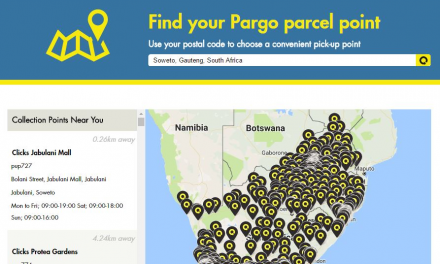
South Africa has 5.7m new addresses
A roll-out of 5.7-million additional postal addresses has been achieved in the last three years to the end of March 2008, the SA Post Office (Sapo) said on Friday.
The project aimed to provide formal addresses to thousands of South Africans who previously did not have addresses, limiting their access to the mainstream economy.
Of the 5.7-million total addresses, 3.76-million (66 percent) were in rural areas and 1.94-million (34 percent) were in urban areas — bringing the number of addresses in the country to 12.5-million.
Before the Sapo project started, tribal and informal settlement communities found themselves negatively affected by Financial Intelligence Centre Act (Fica) regulations, as these required proof of residential address before any financial transactions could be effected.
In rural and informal settlements, Sapo found that a household had several different identifiers or numbers on the door, using different methods.
Rural address allocation has now been completed for large portions of the country. This included location details (registering villages within areas, identifying sections and dwellings in villages), client details (head of each dwelling, contact details) and postal details (post office, route and postcode).
A roll-out of 5.7-million additional postal addresses has been achieved in the last three years to the end of March 2008, the SA Post Office (Sapo) said on Friday.
“We are excited about giving thousands of citizens in our country an opportunity to become active participants in the economy,” Janras Kotsi, executive in charge of mail business at Sapo said.
The project aimed to provide formal addresses to thousands of South Africans who previously did not have addresses, limiting their access to the mainstream economy.
Of the 5.7-million total addresses, 3.76-million (66 percent) were in rural areas and 1.94-million (34 percent) were in urban areas — bringing the number of addresses in the country to 12.5-million.
Before the Sapo project started, tribal and informal settlement communities found themselves negatively affected by Financial Intelligence Centre Act (Fica) regulations, as these required proof of residential address before any financial transactions could be effected.
“As a result, the number of formal addresses had to be increased,” Sapo said.
In rural and informal settlements, Sapo found that a household had several different identifiers or numbers on the door, using different methods.
“The result was multiplicity of address identifiers, inconsistency, non-sequential numbering, gaps in the data and general confusion about which information was used for what.”
Family moves
Occasionally, due to storms, fire, employment, business, social pressures and other reasons, the family would move and would take the door with them in order to not lose the numbers.
“Although conscientious, this did mean that the service providers could not find the new house.”
To correct this, a household identification structure was designed by Sapo.
It had to be simple to implement and manage, standardised for universal use by all service providers and others — and simple enough for the public to use.
“Using a hierarchical structure, it was possible to accommodate all villages within geographic areas and postal areas.”
It had also been possible to accommodate all dwellings and households within a six-digit numerical structure.
Rural address allocation has now been completed for large portions of the country. This included location details (registering villages within areas, identifying sections and dwellings in villages), client details (head of each dwelling, contact details) and postal details (post office, route and postcode).













